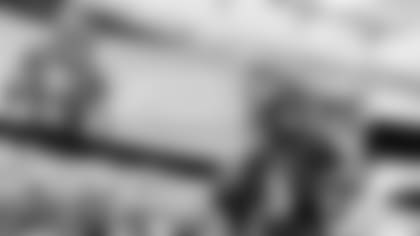There were parts of the Ravens' Great Roster Reshuffle that were out of their control. They couldn't help that Ray Lewis retired, or Matt Birk retired, or that the Cleveland Browns gave $40 million to their pass-rush specialist, Paul Kruger, who didn't even start.
But the rest of their moves were voluntary. They traded Anquan Boldin. They parted ways with Bernard Pollard and Bobbie Williams. They elected to bow out of the bidding after seeing what the Houston Texans offered Ed Reed and the Miami Dolphins offered Dannell Ellerbe.
The result was a major exodus from a team that had just won the Super Bowl, stunning the players still on the roster, the still-delirious fans and the rest of the league. Tear apart a champion? That might happen in baseball, where the Florida Marlins sold off a World Series winner a decade or so ago, but it didn't happen in the NFL.
But now that the Ravens have used free agency and the draft to bring in replacements, it seems clear beyond measure that they did what they had to do.
You can nitpick individual moves within their plan, but in general, on a macro level, the Great Roster Shuffle needed to happen.
Even though they had just hoisted the Vince Lombardi Trophy, the Ravens were aging in places, lacking speed, soft against the run. They were a No. 4 seed that pulled themselves together just in time, helped by a timely Hail Mary pass. Don't dig too deep trying to figure out how it happened. It just did. Enjoy it.
Anyway, the chances of them winning another Super Bowl with the same nucleus weren't good. The defense was creaky and vulnerable, ranked in the lower half of the league. The offense was superb during the Super Bowl run after dealing with inconsistency throughout the regular season.
While there is still work to be done on the offense, you can see the outline of the "new" Ravens now that the draft is over. They're indisputably younger and faster, infused with energy from veterans Michael Huff and Elvis Dumervil and rookies Matt Elam and Arthur Brown. They're also much sturdier in the defensive interior with veterans Chris Canty and Marcus Spears and rookie Brandon Williams.
Plenty of moves and decisions remain before the season begins in September, and it's certainly fair to ask questions about chemistry and the size of some newcomers, but it's going to be interesting, very interesting, to follow the Ravens in 2013.
Before the games begin, there's going to fierce competition for playing time at linebacker, receiver and in that interior defensive rotation, to name three spots where hosts of candidates are situated.
And once the games do begin, there's certainly going to be an adjustment period with so many new parts coming together. The Ravens aren't going to be ranked among the Super Bowl favorites. I've seen one oddsmaker put their chances at 20-1, higher than eight other teams, for what that's worth (not much).
But the quality of their overhaul can't be judged solely on whether they go all the way next season. I know some will use that bar to judge, but it's a ridiculous expectation, a bar set much too high.
Sure, all that matters in the bottom-line NFL is whether you win, so in a sense, if you don't win it all, you do fail. But let's be realistic. Sometimes you can have the best team by far and not win it all. Or, ahem, you can be a No. 4 seed and go all the way.
The goal is really to put yourself in position to win and hope for the best.
While the Ravens obviously shuffled their roster to give themselves what they believe is a better chance of repeating, they really did it to put themselves in position to compete for multiple years, 2013 and beyond. That's the mandate Owner Steve Bisciotti has given the front office: Be a consistent contender, not a team that goes up and down.
To make that happen, a sizable changing of the guard was their best course. Really, their only course.


















